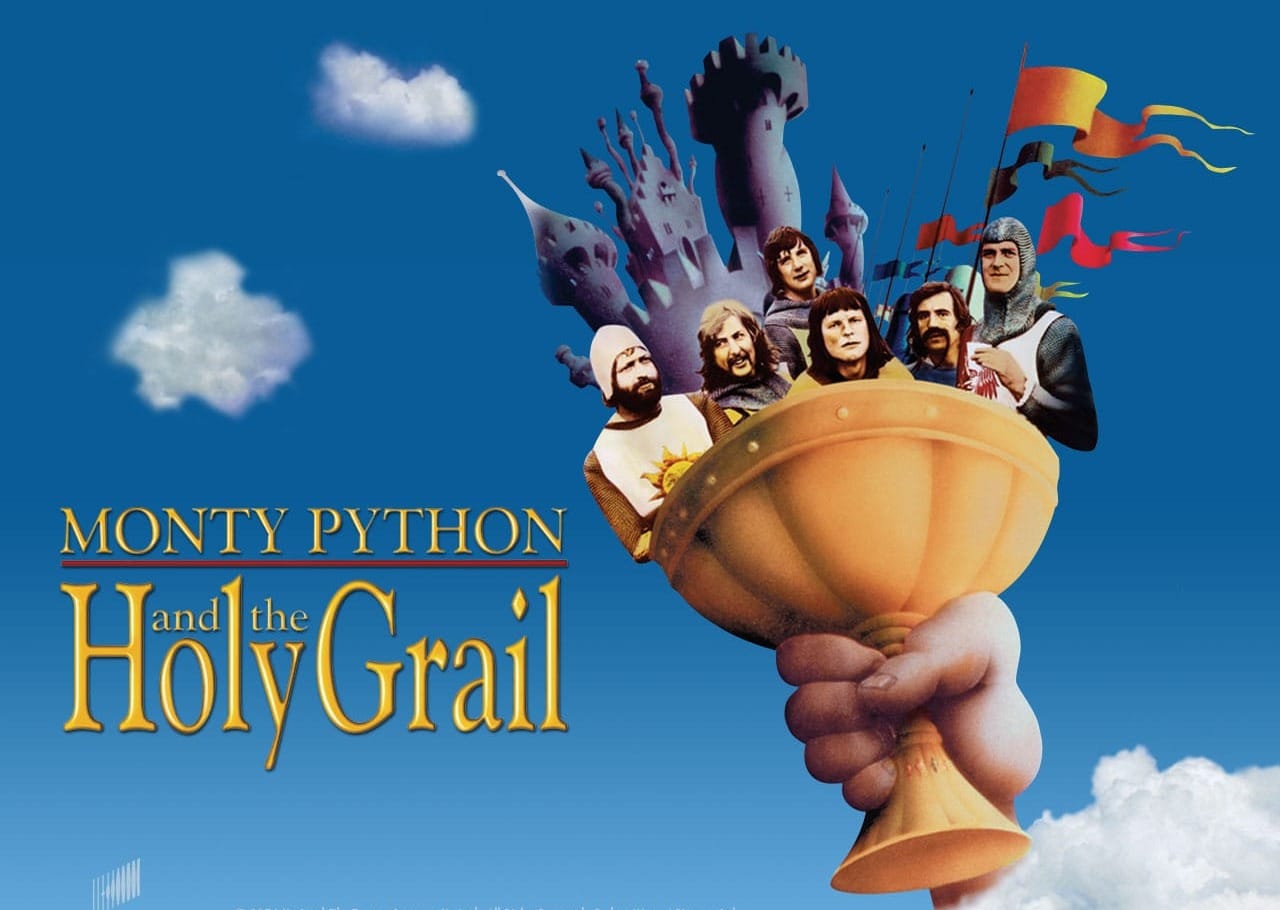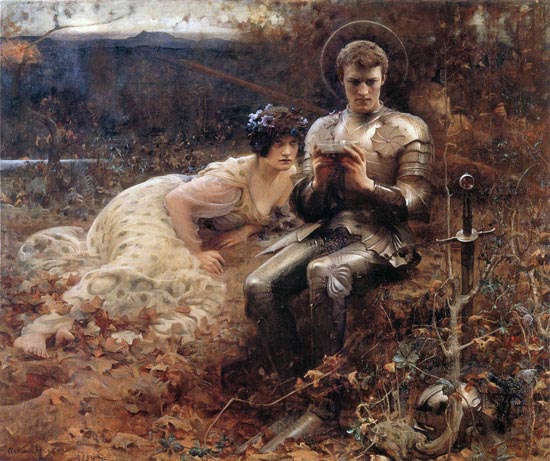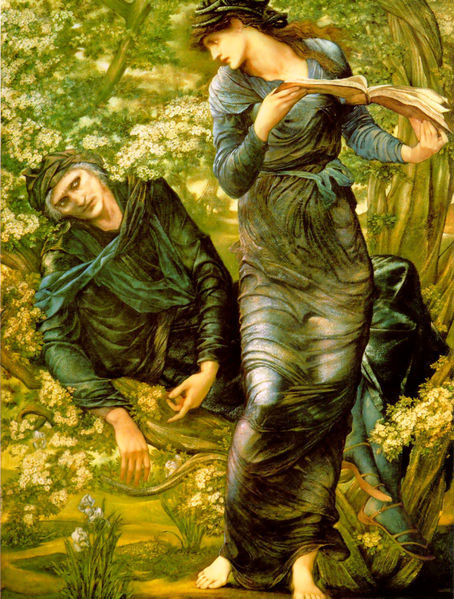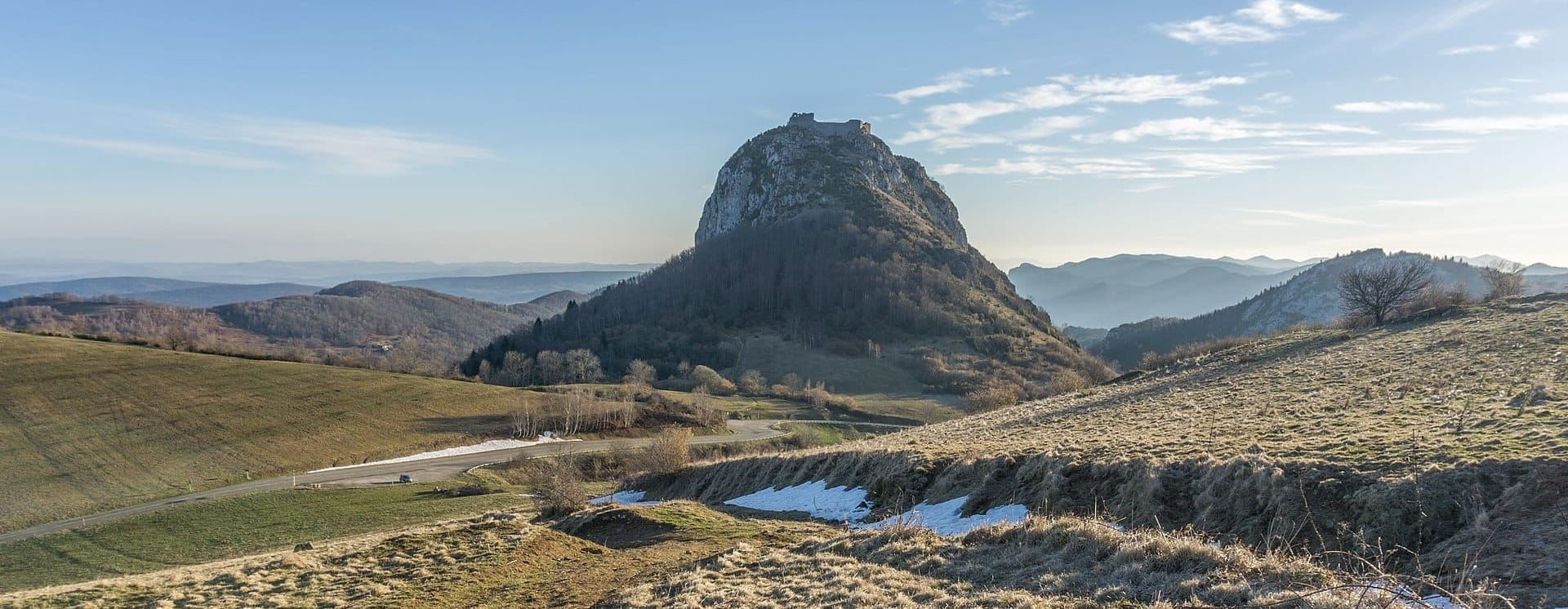The Holy Grail as Sexual Quest

Strip away the clothes and what you find at the heart of the Holy Grail myths is sex and sexual passion. The virgin knight errant must first climb the holy mountain, cross the perilous bridge to the castle and there explore the chamber of mysteries to claim the rose and the grail inside. God help you if you cannot find the masculine sexual quest motif in that.

This was recognized at the time. Or, at least it was recognized explicitly by aristocratic women in the 12th century like Marie de France, and bawdy tales called fabliaux existed in parallel with the chaste courtly love poetry. A perfect example from that time is an impressive Breton narrative lai (or lay) called Lecheor (from which we derive the word lecher). It says that chivalric knights were only interested in one thing: the woman’s con (cunt). Satirical in intent, there is a direct link here to Boccaccio and Chaucer. It seems likely it was written by a woman.
Even before Monty Python took it on, the sexual dimension was present in the sub-plots: Lancelot’s dalliance with Guinevere, the sexually impotent Wounded King, the incest that produced Mordred… For that reason the Victorians avoided the Grail legends until Tennyson cleaned them up (Idylls of the King). After that, the pre-Raphaelites tried to play loose with them, but their paintings are surprisingly chaste, with not a naked breast among them. The painting above is Arthur Hacker’s The Temptation of Sir Percival (1894), where the hero appears to be in doubt about the mission.
The far more famous painting below shows what happened to Merlin, who won’t be finding no Holy Grail: The Beguiling of Merlin by Edward Burne-Jones (1870’s). Most critics read it autobiographically: Burne-Jones beguiled by his model and mistress, Maria Zambaco. At one point when he wanted to break off the affair (he was married), she suggested a suicide pact in Regents Canal. He was horrified, so she threatened to jump in anyway. Neighbors and police rushed to the rescue. The lovers later attempted to run away to France together but that didn’t work out either. Like in the Grail legends…

Moving into the 20th century, a rather interesting figure named Otto Rahn argued in 1933 that the Cathar castle Montségur near the Pyrenees was Montsalvat, the castle of the Holy Grail. In his book Crusade Against the Grail he accepted that the Grail is a metaphor for the human soul. But he also tells of how Wolfram von Eschenbach's epic Parzival, which was contemporary with the Cathars, is the story of how the Grail fell from Lucifer's crown to earth and that it landed on Montségur.

This was so fascinating that Rahn found himself popular with the Nazis, Heinrich Himmler in particular. Rahn never resolved his doubts about the Nazis and he seems to have committed suicide in 1939, at the age of 35, although even that is contested. Himmler, on the other hand, thought Montsalvat was Montserrat Monastery near Barcelona, and he went there in 1940 in search of the Grail. The film Indiana Jones and the Last Crusade evidently disagrees with both of them, placing the Grail castle in today's Turkey, at İskenderun, on the coast near the Syrian border.
Academic medieval historians will have none of it. Ever since the 12th century they have been saying that Merlin, King Arthur and their compatriots were merely the fictional creation of Geoffrey of Monmouth, who needed to spice up his The History of the Kings of Britain (Historia Regum Britanniae) - written in the 1130's - with some flights of fancy.
Related Holy Grail links:
As the womb of the Virgin Mary, as the Philosopher's Stone and as DNA|
Hildegard of Bingen and medieval sexual imagery
The Nazis and Tibet (at bottom)
Casanova and The Elixir of Life
Wagner's erotic Parsifal and the Cathars
Tristan and Yseult (Isolde) legend
Beauty & the Beast and the red rose
The DaVinci Code and Mary Magdalene
Alternative movements of the '20s and '30s: Monte Verità
